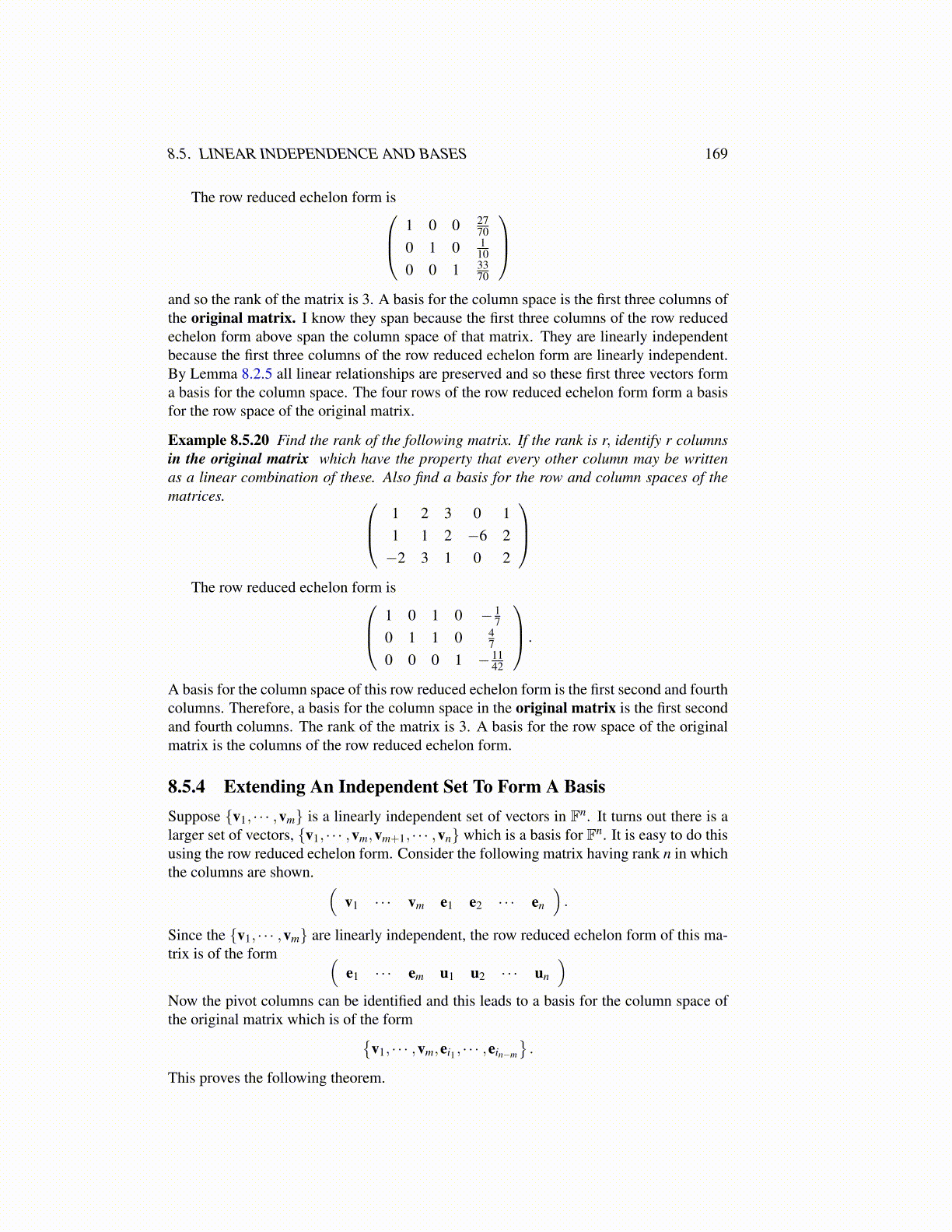
8.5. LINEAR INDEPENDENCE AND BASES 169
The row reduced echelon form is 1 0 0 2770
0 1 0 110
0 0 1 3370
and so the rank of the matrix is 3. A basis for the column space is the first three columns ofthe original matrix. I know they span because the first three columns of the row reducedechelon form above span the column space of that matrix. They are linearly independentbecause the first three columns of the row reduced echelon form are linearly independent.By Lemma 8.2.5 all linear relationships are preserved and so these first three vectors forma basis for the column space. The four rows of the row reduced echelon form form a basisfor the row space of the original matrix.
Example 8.5.20 Find the rank of the following matrix. If the rank is r, identify r columnsin the original matrix which have the property that every other column may be writtenas a linear combination of these. Also find a basis for the row and column spaces of thematrices. 1 2 3 0 1
1 1 2 −6 2−2 3 1 0 2
The row reduced echelon form is 1 0 1 0 − 1
70 1 1 0 4
70 0 0 1 − 11
42
.
A basis for the column space of this row reduced echelon form is the first second and fourthcolumns. Therefore, a basis for the column space in the original matrix is the first secondand fourth columns. The rank of the matrix is 3. A basis for the row space of the originalmatrix is the columns of the row reduced echelon form.
8.5.4 Extending An Independent Set To Form A BasisSuppose {v1, · · · ,vm} is a linearly independent set of vectors in Fn. It turns out there is alarger set of vectors, {v1, · · · ,vm,vm+1, · · · ,vn} which is a basis for Fn. It is easy to do thisusing the row reduced echelon form. Consider the following matrix having rank n in whichthe columns are shown. (
v1 · · · vm e1 e2 · · · en
).
Since the {v1, · · · ,vm} are linearly independent, the row reduced echelon form of this ma-trix is of the form (
e1 · · · em u1 u2 · · · un
)Now the pivot columns can be identified and this leads to a basis for the column space ofthe original matrix which is of the form{
v1, · · · ,vm,ei1 , · · · ,ein−m
}.
This proves the following theorem.